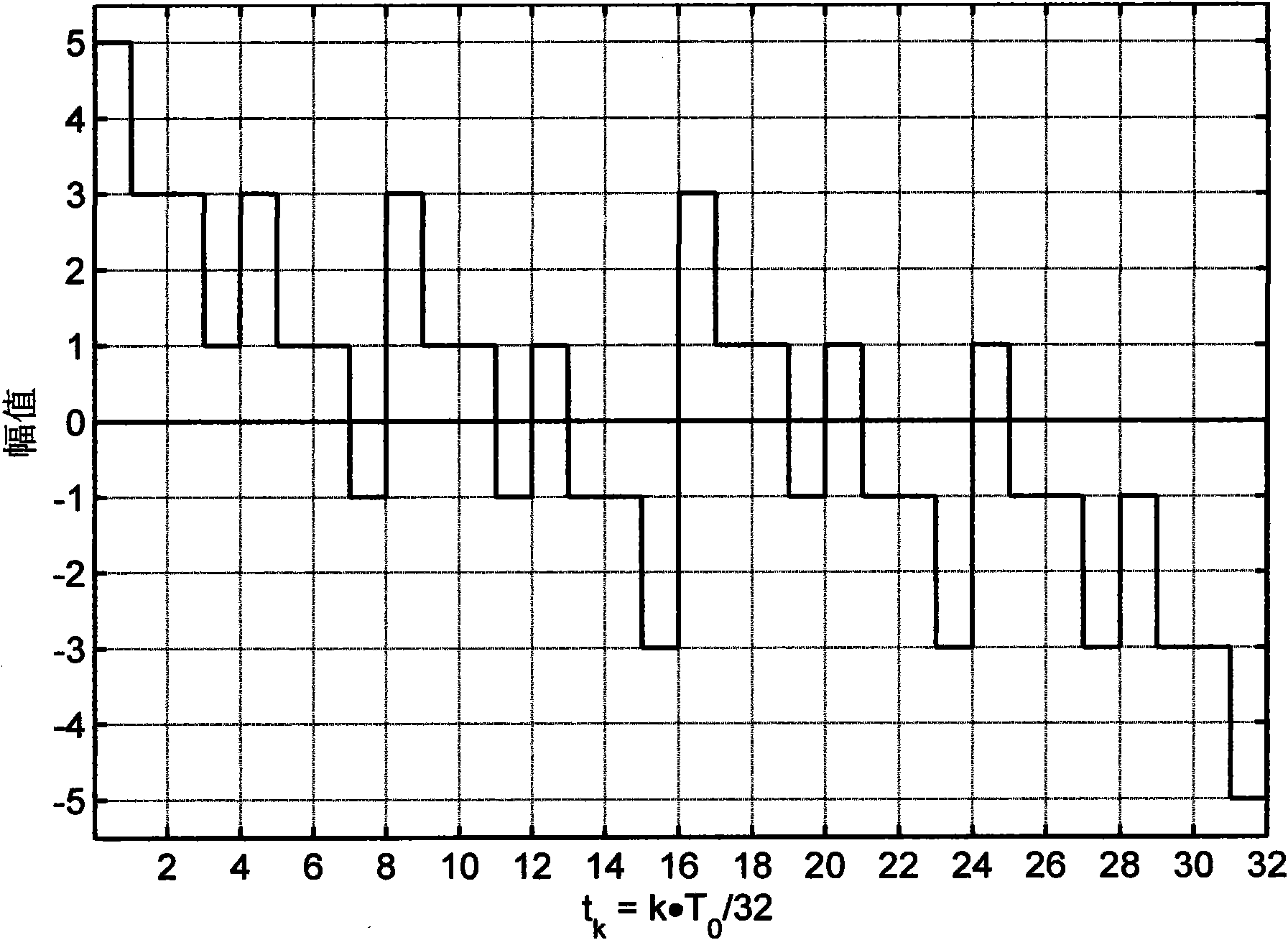Synthesis method of multifrequency synchronous signal source
A technology of synchronous signal and synthesis method, which is applied in medical science, sensors, diagnostic recording/measurement, etc., and can solve the problems that synchronous excitation signal cannot meet the requirements of data processing, low cost, and hardware is difficult to implement.
- Summary
- Abstract
- Description
- Claims
- Application Information
AI Technical Summary
Problems solved by technology
Method used
Image
Examples
Embodiment 1
[0042] Embodiment 1: According to figure 1 In the synthesis steps shown, the five-frequency synchronization signal f(5, t) is synthesized.
[0043] Step 1, select N=5, it can be known that f(5, t) in a cycle T 0 The inner signal is subdivided into 32 equal parts.
[0044] Step 2, find out the first five symmetric odd functions SAL(2 0 , t), SAL(2 1 , t), SAL(2 2 , t), SAL(2 3 , t), SAL(2 4 , t), represent them as binary vectors of length 32, such as figure 2 shown.
[0045] Step 3, accumulate and sum the five vectors to obtain the accumulated sum vector g(5, t), such as image 3 As shown, the cumulative sum vector is a multivalued piecewise linear function.
[0046] Step 4, use the sign function sgn() to normalize the accumulated sum vector g(5, t), so that a five-frequency synchronization signal with only two values of +1 and -1 can be obtained in a cycle T 0 The vector f(5, t) inside, it is expressed as a vector form containing 32 elements in a period: f(5, t)=[...
Embodiment 2
[0070] Embodiment 2: According to figure 1 In the synthesis steps shown, the seven-frequency synchronization signal f(7, t) is synthesized.
[0071] Step 1, select N=7, it can be seen that f(7, t) in a cycle T 0 The inner signal is subdivided into 128 equal parts.
[0072] Step 2, find out the first seven symmetric odd functions SAL(2 0 , t), SAL(2 1 , t), SAL(2 2 , t), SAL(2 3 , t), SAL(2 4 , t), SAL(2 5 , t), SAL(2 6 , t), expressing them as binary vectors of length 128, such as Figure 7 shown.
[0073] Step 3, accumulate and sum the seven vectors to obtain the accumulated sum vector g(7, t), such as Figure 8 shown. Depend on Figure 8 It can be seen that the cumulative sum vector is a multivalued piecewise linear function.
[0074] Step 4, use the sign function sgn() to normalize the accumulated sum vector g(7, t), so as to obtain a seven-frequency synchronous signal with only two values of +1 and -1 in a cycle T 0 The vector f(7, t) inside, it is expresse...
PUM
 Login to View More
Login to View More Abstract
Description
Claims
Application Information
 Login to View More
Login to View More - R&D Engineer
- R&D Manager
- IP Professional
- Industry Leading Data Capabilities
- Powerful AI technology
- Patent DNA Extraction
Browse by: Latest US Patents, China's latest patents, Technical Efficacy Thesaurus, Application Domain, Technology Topic, Popular Technical Reports.
© 2024 PatSnap. All rights reserved.Legal|Privacy policy|Modern Slavery Act Transparency Statement|Sitemap|About US| Contact US: help@patsnap.com










